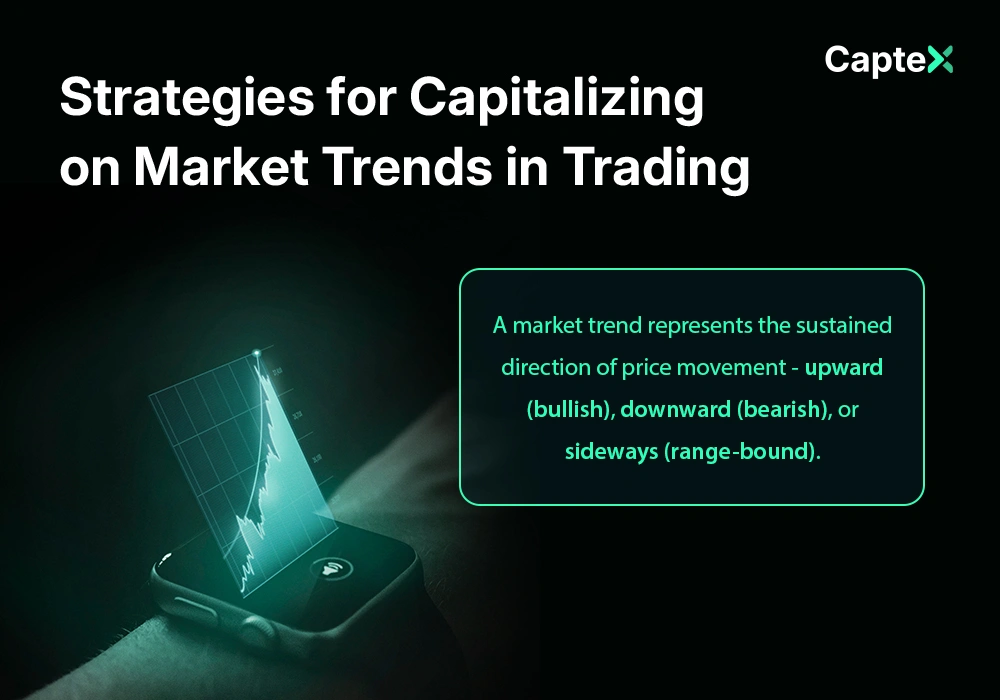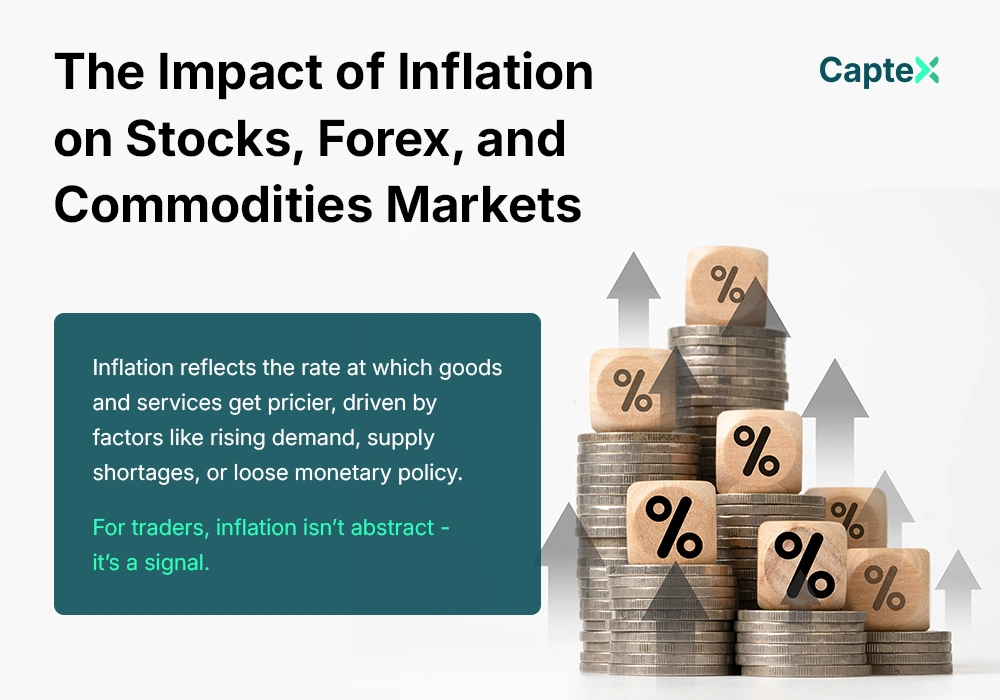Market trends serve as a critical compass for traders aiming to maximize returns. Effectively capitalizing on market trends requires a structured approach, enabling traders to identify and leverage directional movements in the dynamic landscape of 2025’s online trading environment. Success hinges on preparation, analysis, and disciplined execution.
Online trading platforms such as MetaTrader 5, Interactive Brokers, and Kraken provide robust tools to monitor and act on these trends across asset classes like forex, equities, and cryptocurrencies. Whether driven by macroeconomic shifts, technological advancements, or geopolitical events, understanding and acting on these patterns can significantly enhance profitability. This article explores proven strategies to harness market trends effectively.

Understanding Market Trends
A market trend represents the sustained direction of price movement—upward (bullish), downward (bearish), or sideways (range-bound). Recognizing these trends is foundational to strategic trading. For instance, in 2023, the cryptocurrency market exhibited a bullish trend as Bitcoin surged past $60,000, fueled by institutional adoption. Conversely, a bearish equities trend emerged in 2022 amid rising interest rates.
Trends emerge from a confluence of factors: economic data releases, central bank policies, or shifts in investor sentiment. In 2025, traders might observe a bullish forex trend in USD/JPY if U.S. monetary tightening persists, or a bearish crypto trend if regulatory pressures intensify. Identifying the underlying drivers is essential for informed decision-making.
The Importance of Trend Identification
Accurately pinpointing trends allows traders to align their positions with market momentum, reducing the likelihood of losses from countertrend trades. A trader who identified the bullish gold trend in 2024, spurred by inflation fears, could have entered at $1,900 and exited at $2,100, securing a substantial gain.
Misreading trends carries risks. Entering a position against a strong bearish trend, such as the 2022 decline in tech stocks, often results in significant drawdowns. Precision in trend analysis underpins the ability to capitalize effectively.
Analytical Tools for Trend Detection
Traders rely on a suite of analytical tools to detect and confirm market trends. These tools, widely available on modern platforms, provide clarity amid market noise.
- Moving Averages: The 50-day and 200-day moving averages smooth price data to reveal direction. A “golden cross” (50-day crossing above 200-day) signaled a bullish trend in the S&P 500 in 2023, prompting timely entries.
- Relative Strength Index (RSI): RSI measures momentum, with readings above 70 indicating overbought conditions and below 30 suggesting oversold levels. In 2025, an RSI dip below 30 on EUR/USD could flag a potential bullish reversal.
- Trendlines: Connecting successive highs or lows, trendlines visually confirm direction. A breakout above a descending trendline in crude oil in 2024 marked a shift to bullish momentum.
These tools, when combined, offer a robust framework for trend validation.
Strategies for Capitalizing on Trends
Once a trend is identified, deploying the right strategy is critical to maximizing returns. Below are proven approaches tailored to trending markets.
Trend-Following Strategy
This approach involves entering positions in the direction of the prevailing trend. A forex trader in 2025 might buy USD/CAD as it climbs from 1.35 to 1.40, driven by strong U.S. economic data, exiting as momentum wanes. The key is confirmation—entering after a moving average crossover or trendline break, as seen in gold’s 2023 rally.
Breakout Trading
Breakouts occur when prices breach key levels, signaling a trend’s start or acceleration. In 2024, Ethereum broke $3,000 resistance after a consolidation phase, climbing to $3,500. Traders can set buy orders above resistance (e.g., $3,010) with stops below (e.g., $2,990) to manage risk.
Pullback Trading
Trends rarely move in straight lines—pullbacks offer entry points. A stock trader in 2025 might wait for Tesla to retreat to its 50-day moving average after a bullish surge, buying at $250 instead of chasing $270. Patience here captures value within the trend.

Risk Management in Trend Trading
Capitalizing on trends demands stringent risk controls to protect capital from sudden reversals. A disciplined approach mitigates the inherent volatility of trending markets.
- Position Sizing: Risk no more than 1-2% of your account per trade. A $10,000 portfolio limits loss to $100-$200, ensuring survival through drawdowns.
- Stop-Loss Orders: Place stops below support in uptrends or above resistance in downtrends. A 2024 crypto trader set a stop at $55,000 on Bitcoin’s $60,000 climb—limiting loss when it dropped.
- Trailing Stops: Lock in profits as trends extend. A forex trader in 2023 trailed USD/JPY from 140 to 145, securing gains without premature exits.
These measures safeguard against the unpredictability of market shifts.
Leveraging Market News and Sentiment
Trends often align with broader narratives. Monitoring economic releases—such as GDP figures or central bank statements—provides context. In 2025, a dovish Federal Reserve stance might propel equity trends upward, while a hawkish turn could strengthen the dollar, impacting forex pairs.
Social sentiment, amplified on platforms like X, also plays a role. A surge in bullish posts about a cryptocurrency in 2024 preceded a 15% rally. Cross-referencing news with technical signals sharpens trend trades.
Building Proficiency Through Practice
Proficiency in trend trading requires hands-on experience. Demo accounts on platforms like Interactive Brokers allow traders to test strategies risk-free. A 2025 trader might simulate a breakout trade on GBP/USD, refining entry and exit timing.
Real-world practice with small stakes—say, $50—builds confidence. A forex trader in 2024 started with micro-lots on EUR/USD, growing $100 to $150 over months. Consistency emerges from repetition.
Adapting to Trend Shifts
Trends evolve—bullish runs fade, bearish slides reverse. A 2023 stock trader who rode the Nasdaq’s climb pivoted to shorts as RSI hit 80, catching the downturn. Flexibility is non-negotiable.
Watch for signs: slowing momentum (MACD divergence), volume drops, or news countering the trend. In 2025, a crypto trader might exit a Bitcoin long at $70,000 as regulatory chatter mounts. Adapt or lose.
The Competitive Advantage of Trend Trading
Capitalizing on market trends offers a strategic edge in volatile 2025 markets. A disciplined forex trader might turn $500 into $1,500 by riding USD/JPY’s rate-driven surge, while a stock trader leverages Tesla’s EV boom for a 20% gain. Precision and patience amplify returns.





